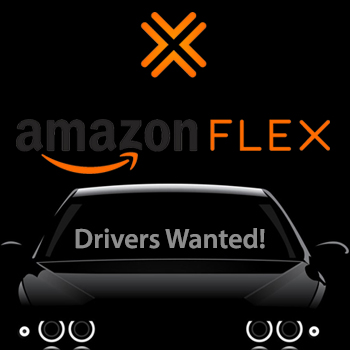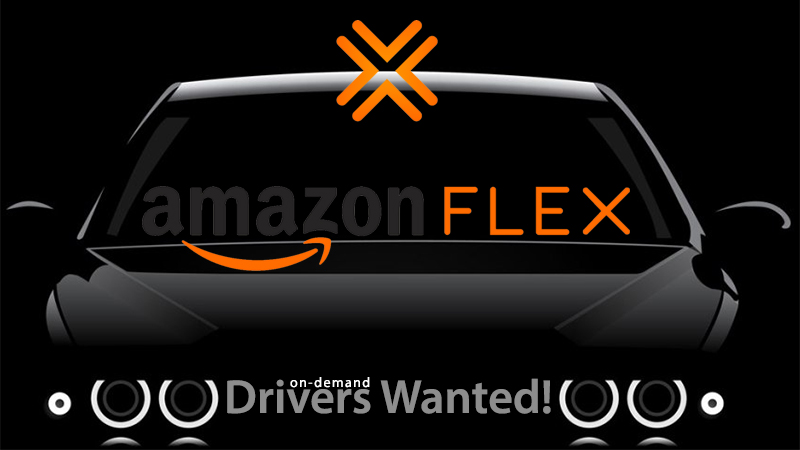The new “on-demand” delivery service move, which has not been announced publicly, is the latest sign that the world’s biggest e-commerce company wants to control more of its own deliveries.
Media reports have said the company plans to lease its own fleet of jets, and CEO Jeff Bezos eventually wants to use drones to get packages to customers.
Amazon outlined details of its latest plan over the last few weeks in an email to contract drivers who deliver parcels for Amazon Flex, a program launched last year to handle speedy deliveries of common household goods to customers using Prime Now, a mobile app that comes with Amazon’s popular $99-a-year Prime membership. They are not Amazon employees.
If the gambit works, industry analysts said it could help Amazon contain its shipping costs, which grew more than 18 percent to $11.5 billion last year.
It might also create a logistics network to compete with United Parcel Service Inc, FedEx Corp and the patchwork of local carriers which currently deliver Amazon packages.
Related: Amazon Planning Acquisitions to Tackle UPS, FedEx
An Amazon spokeswoman confirmed last Wednesday that Flex drivers in Texas are already delivering Amazon.com packages and not just Prime Now orders. The Seattle-based company did not go into details of its plans, but said it will “explore new ways to provide customers with faster service and delivery partners with more opportunities.”
Delivery in 15 Minutes? The Re-emergence of On-Demand Delivery
Can you imagine ordering a printer cartridge from Staples online and getting that purchase delivered 15 minutes later? Believe it or not, that super-premium service level once existed in major cities in the U.S., Europe, and Asia. It was called “B15” for bike messenger delivery in 15 minutes.
In the 1990s, before the widespread use of email and online document exchange, the local delivery industry was delivering all those documents that are now digital: contracts, mortgage paperwork, blueprints, advertising proofs, and banking materials, to name only a few. Competition was intense among local carriers, so service levels started to rise.
Eventually, local delivery companies started staging a pick-up person inside large buildings that had offices that initiated significant volumes of delivery orders.
These pick-up couriers would be immediately dispatched by radio to the floor where the order was ready, pick it up, and head down the elevator to hand off the package(s) to bike messengers or walkers, who headed directly to the recipient’s building. The walker or biker would hand the package to the drop-off courier staged in the recipient building, or deliver it directly themselves, resulting in an incredibly rapid delivery.
It was high times for the local delivery industry and the peak of on-demand delivery. Every owner and messenger loved the sexy margins that on-demand delivery provided. So it was sad times when on-demand delivery started to decline. The demise of on-demand delivery started with the fax machine, accelerated with email and was complete with the fax machine, accelerated with email and was complete with Check 21 legislation in 2004. Anything that can be electronically transmitted goes by email or fax today. On-demand delivery is now a modest piece of the local delivery market size and B15 is long gone.
However, e-commerce, rising customer expectations and the emergence of a whole new set of players is signaling a resurgence in on-demand delivery. In San Francisco alone, there are 68 apps that offer rapid local delivery as part of their offering (furniture, alcohol, cookies, etc.). In Denver there are 11 on-demand marijuana delivery companies currently active. Starbucks, Amazon and Google all have on-demand delivery initiatives.
Is this a flash in the pan of over exuberant venture capital money or are we at the front end of the re-emergence of on-demand delivery? My bet is we’re seeing the beginning of a long term trend and the market size for local delivery will be dramatically increasing as a result. Amazon sets the standard for e-commerce and they continue to roll-out same day (now available in 11 markets) and on-demand delivery (recently expanded to Miami). So we should expect a lot more retailers, distributors and 3PLs to roll out programs as they look to match this trend towards higher service levels.
When you couple the incredible amount of venture investment for emerging companies offering on-demand delivery and significant steps by established companies on on-demand delivery, it certainly signals a real re-emergence. Importantly, the fact that customer expectations are changing along the way reinforces that it looks like a trend to stay.
Will service levels rise again all the way up to the super premium B15 service level of the 1990s? It could happen a few years down the road, as more and more commerce moves online. In dense urban areas and neighborhoods near shopping malls, the density and distance equation just might match up. With better technology, the emerging use of retail stores as pick-up points and growing delivery volumes, it’s more likely than you think.
Source: Grand Junction
In a recent earnings call, an Amazon executive said the company was not trying to replace partner carriers but rather find ways to handle more of its own deliveries at peak times.
Amazon Flex works like on-demand ride-hailing service Uber. Drivers use the app to sign up for shifts to pick up packages at small warehouses near metropolitan areas - as opposed to Amazon’s massive fulfillment centers - and deliver them to customers’ doors. The program is now available in 14 cities including Seattle, Las Vegas, Phoenix, and Dallas.
Three Flex drivers in northern Texas told Reuters they received an email in recent weeks from Amazon inviting them to take part in a new “opportunity to deliver Amazon.com orders,” separate from existing Prime Now deliveries.
That could be a huge difference for drivers. Prime Now is a relatively niche service with tens of thousands of items, a fraction of the more than 200 million products on Amazon’s main e-commerce site.
“This new stream of packages will create new delivery opportunities,” Amazon wrote in the email to drivers, which was reviewed by Reuters. The expansion appears to be limited so far to select drivers in the Dallas-Fort Worth area.
In order to qualify, Amazon said drivers must have a four-door car that is a “mid-sized sedan or larger” and that drivers would be paid an introductory rate of $18 per hour. They can schedule shifts between 8 a.m. and 4 p.m seven days a week.
Flex drivers can make between $18 to $25 per hour, according to Amazon. They have less control over their schedule but can receive tips, which is not the case for delivering regular Amazon packages. As contractors, drivers must pay for their own insurance and gas.
A Texas-based driver who attended an orientation session for the program, and requested anonymity because he was worried about affecting his status as a driver, was told by an Amazon representative he would need to drive to a larger fulfillment center to pick up boxes for delivery.
Amazon’s email said drivers who sign up for the new program would not initially be able to continue delivering for Prime Now, but would be allowed to deliver both types of packages “later this year.”
Routing more deliveries through its own network of contract drivers would give Amazon more control over its supply chain and cut costs.
The “last mile” portion of delivery - the final and usually most expensive stretch of a package’s journey from a retailer’s warehouse to a customer’s front door – has become increasingly important as shoppers expect cheaper and faster delivery.
The move could be especially cost-effective in out-of-the-way areas where smaller, regional couriers deliver parcels to Amazon customers.
Such couriers charge an average 35 percent of the total shipping cost, said Rob Howard, Chief Executive Officer at Grand Junction, a San Francisco-based logistics technology company.
“This is a huge competitive advantage for Amazon,” said Howard. “It’s not a death sentence yet for local carriers but it’s a new path.”
Source: Reuters
Article topics
Email Sign Up


















